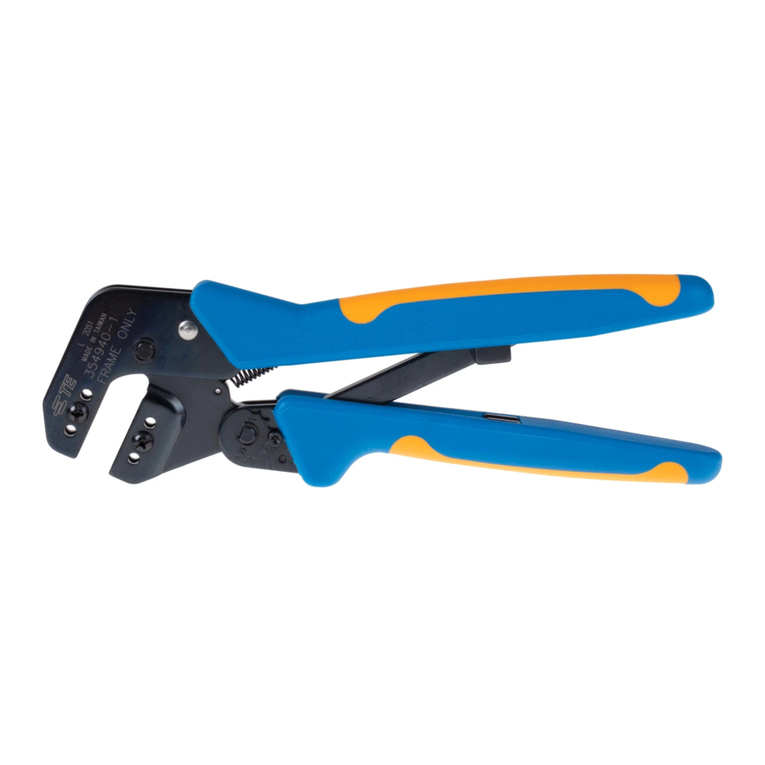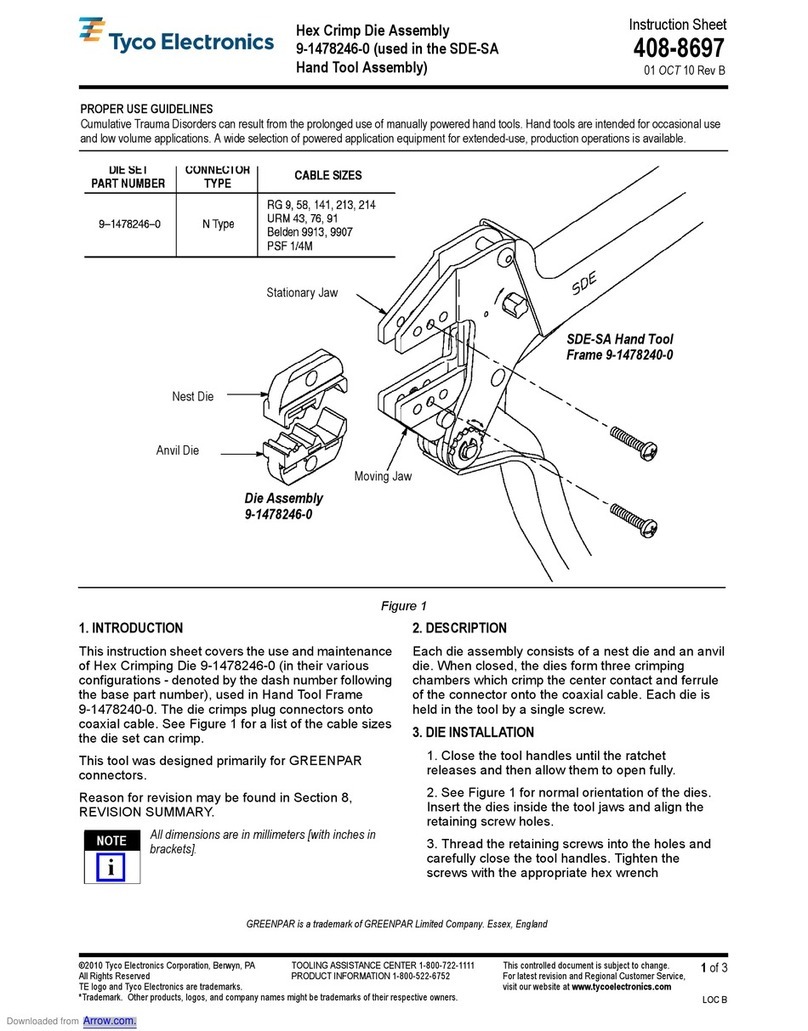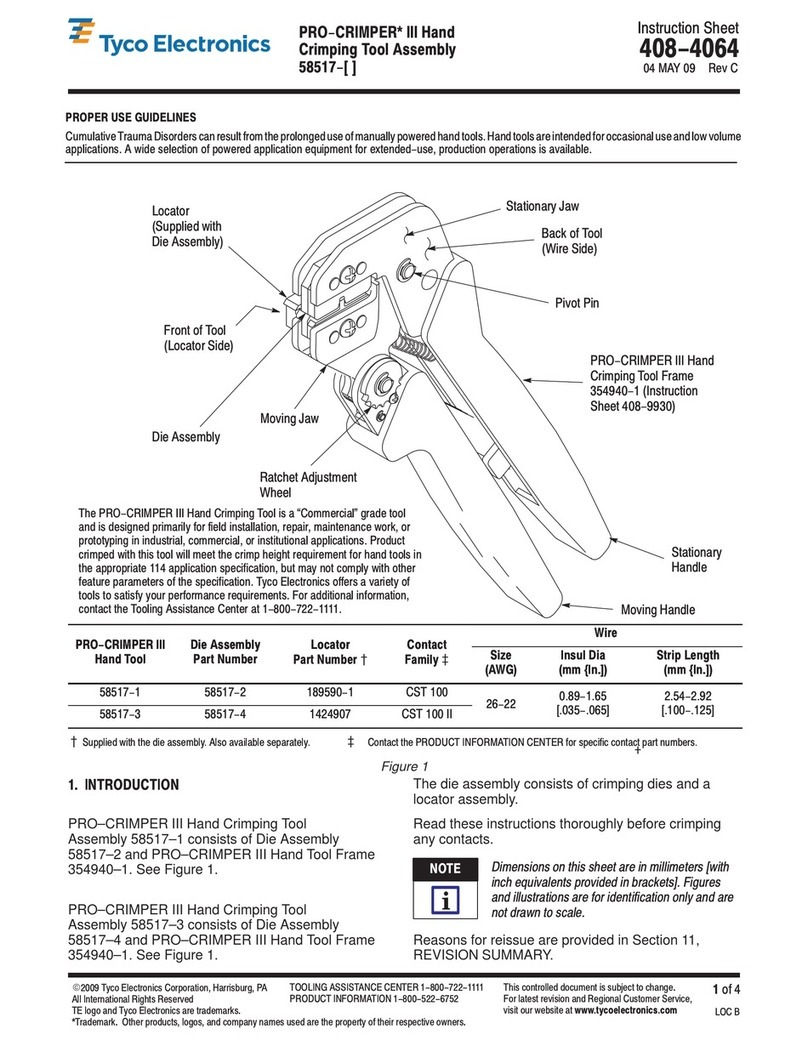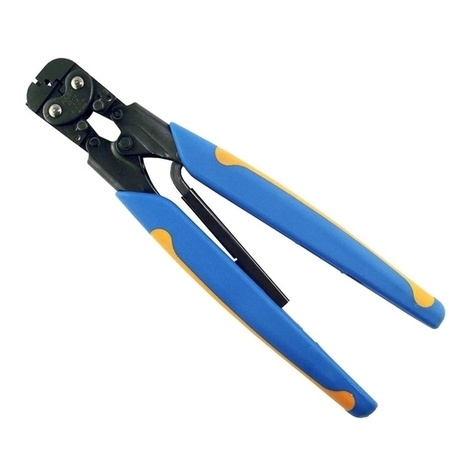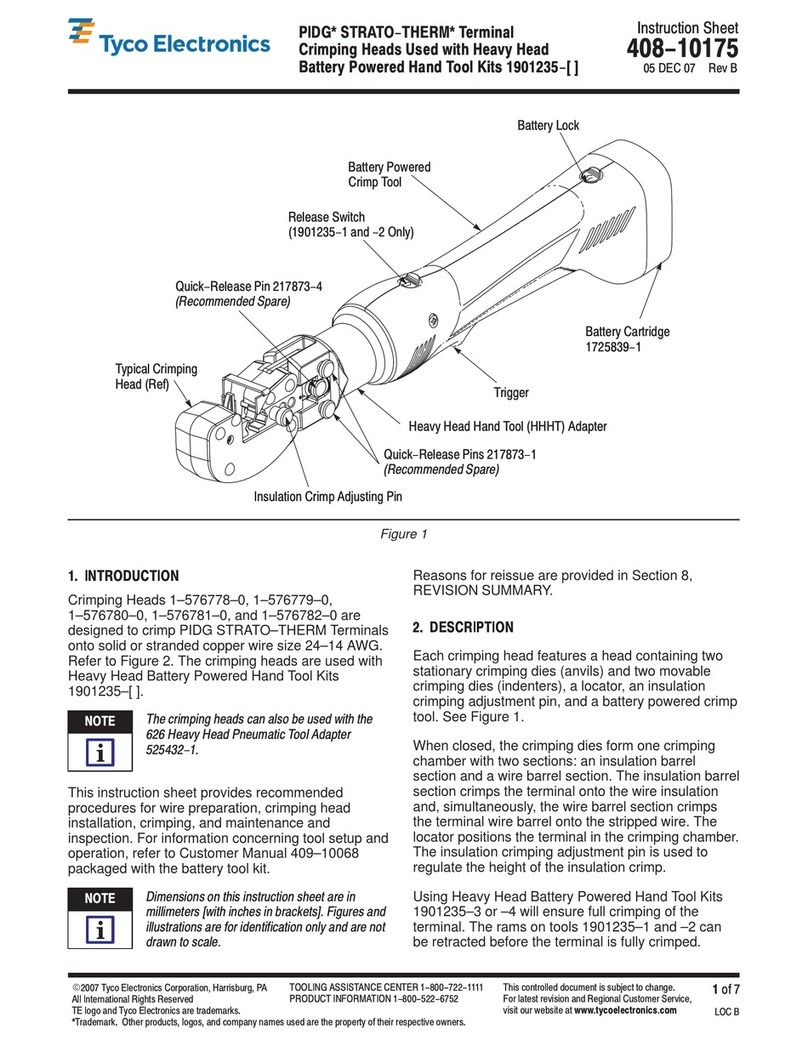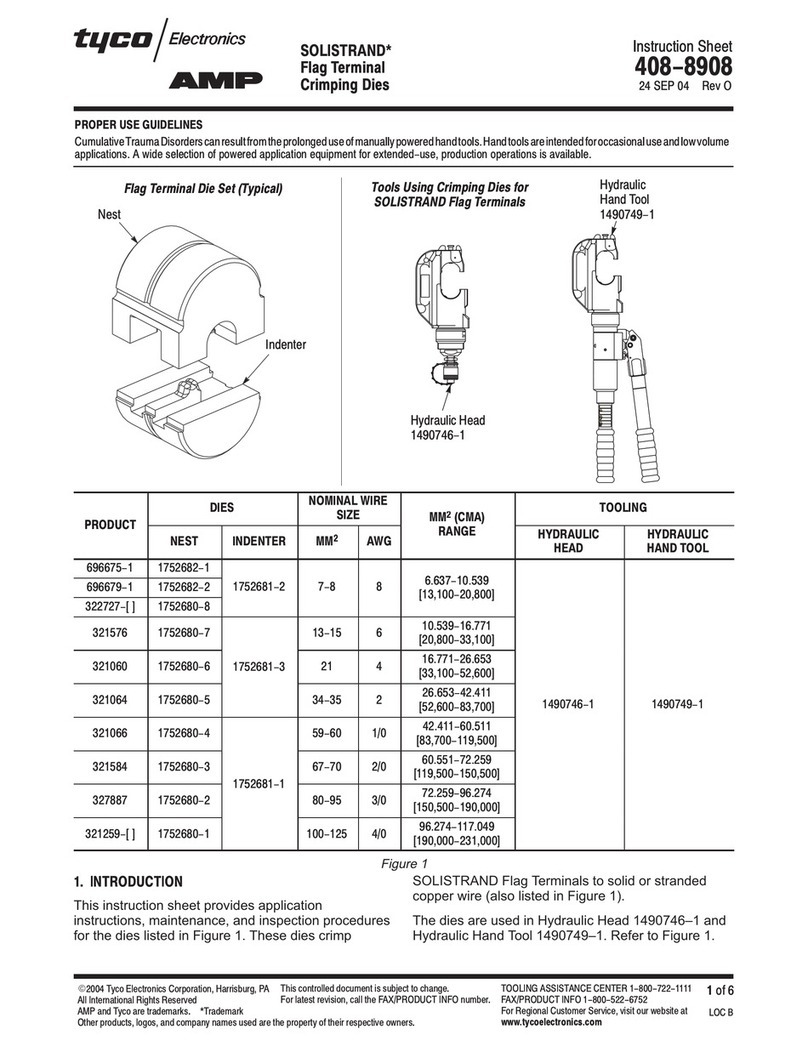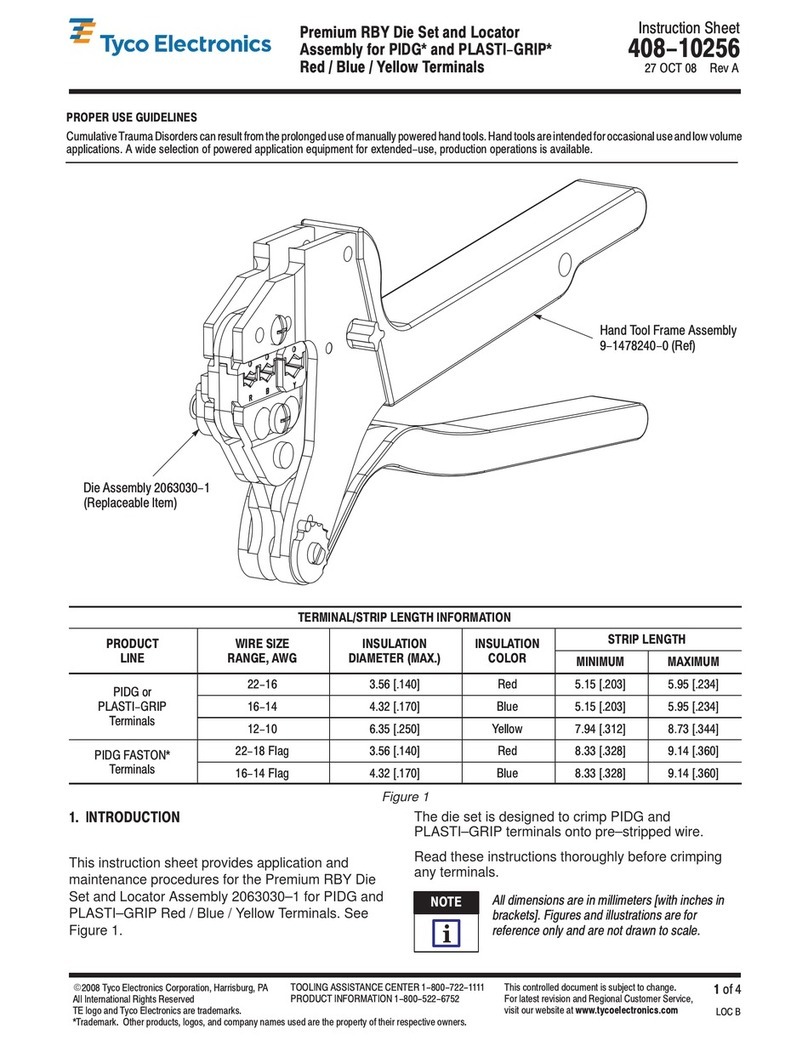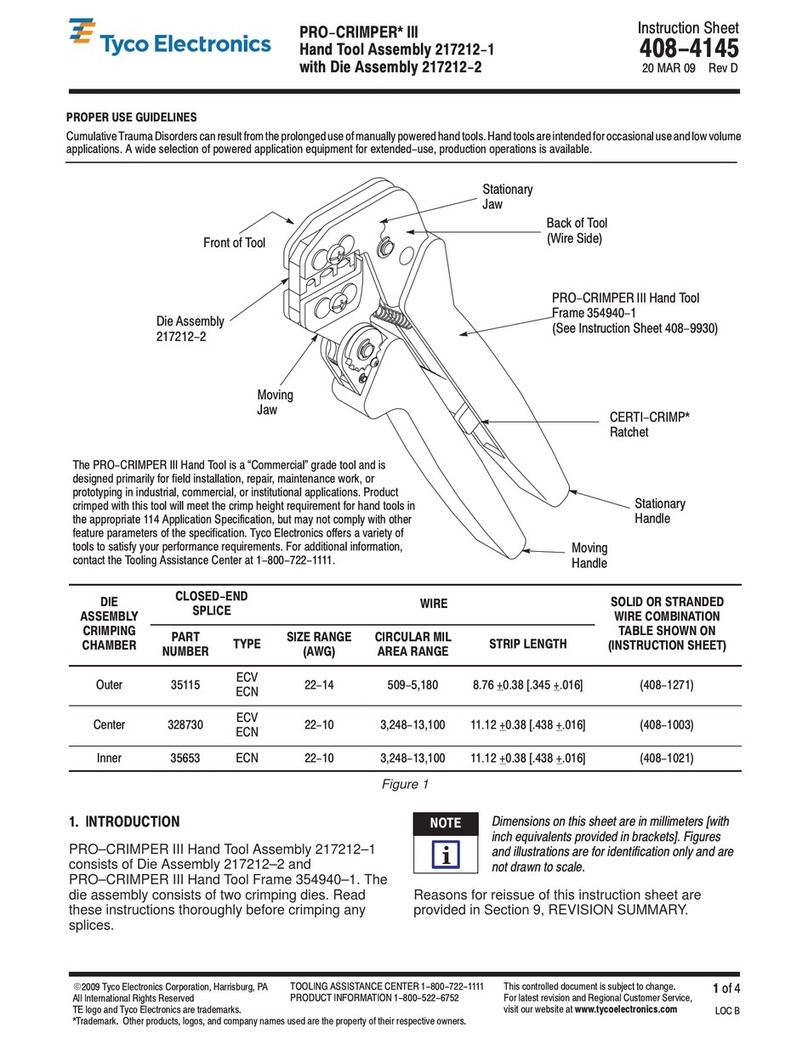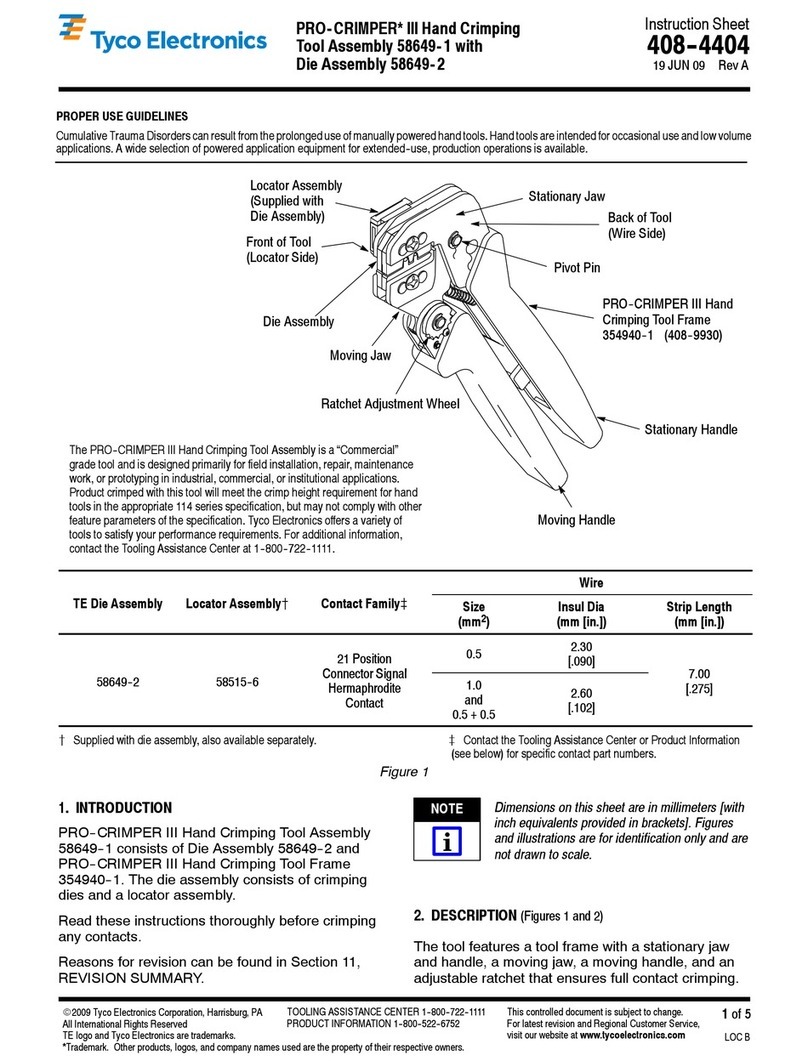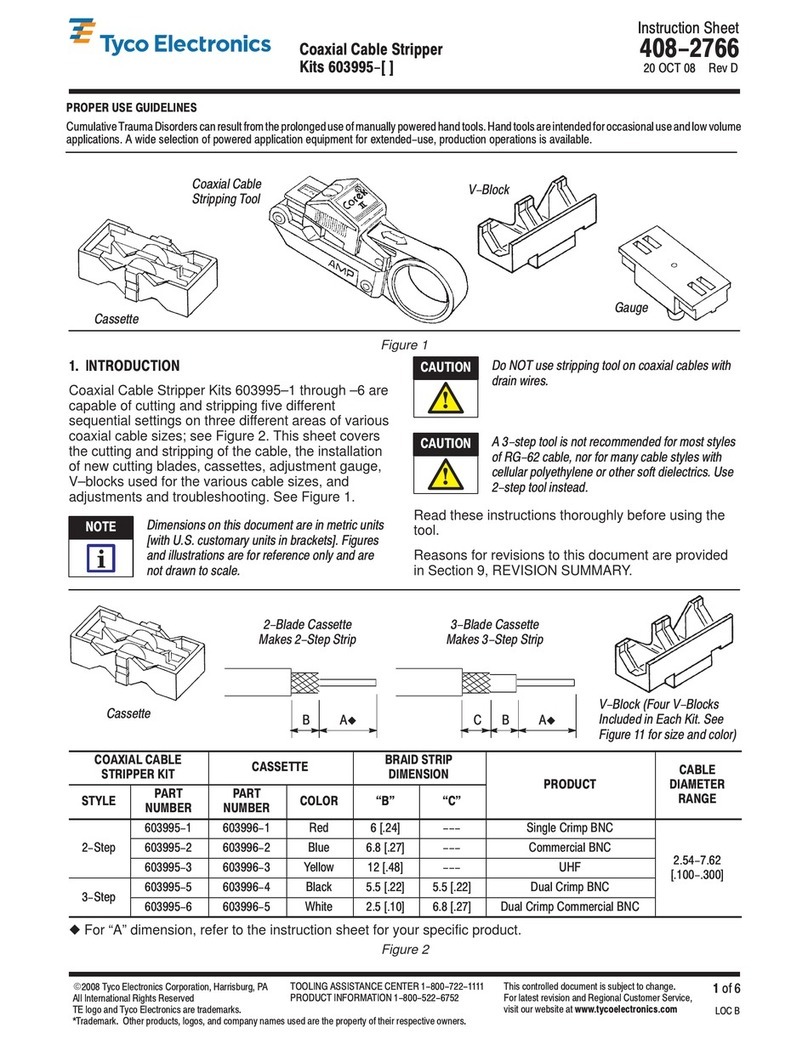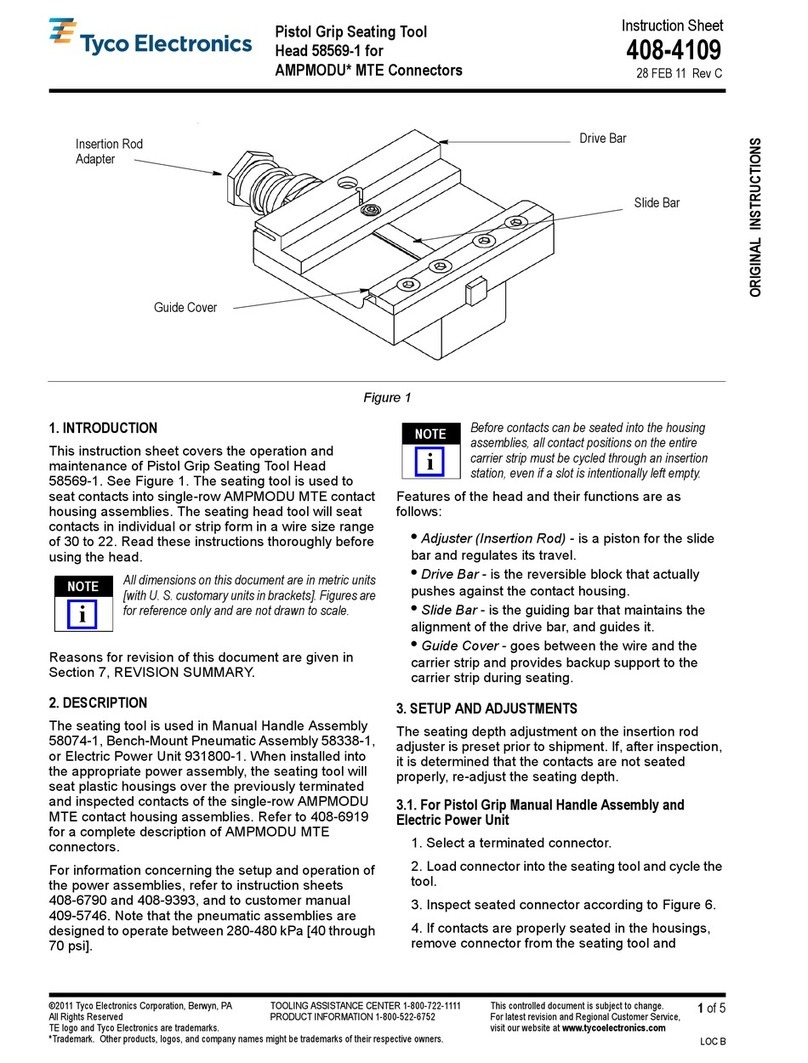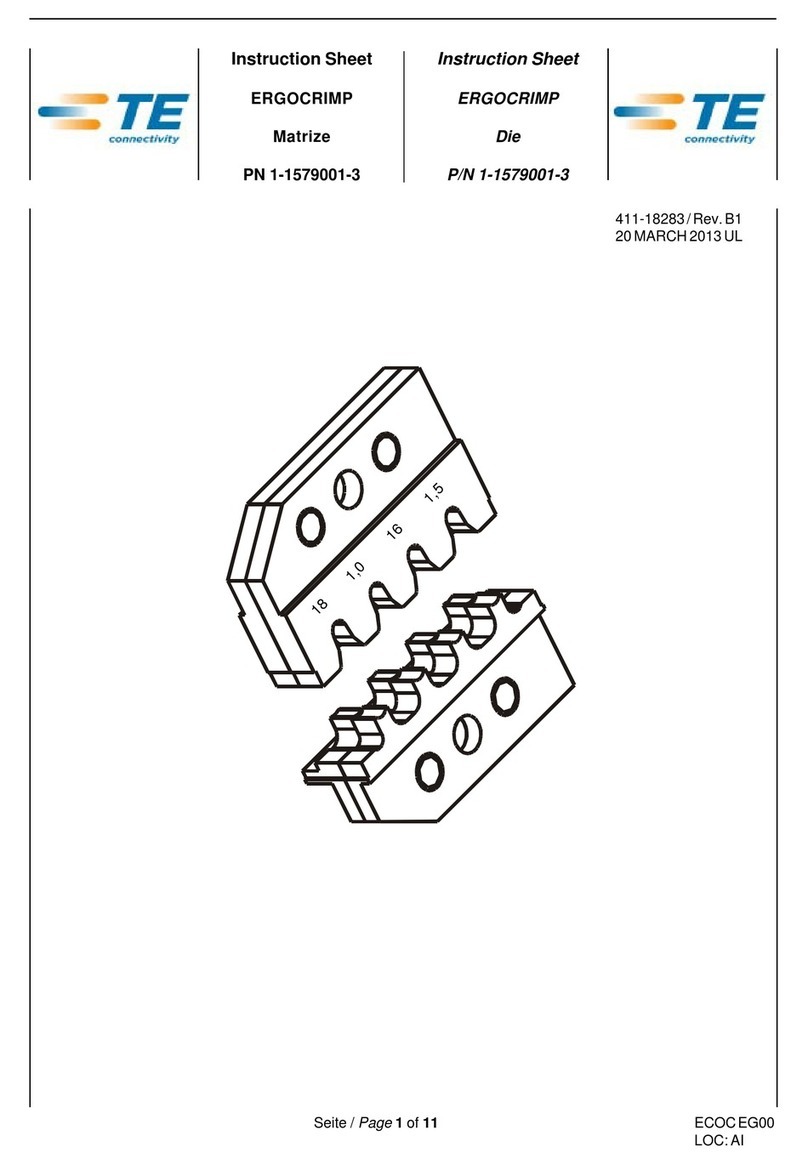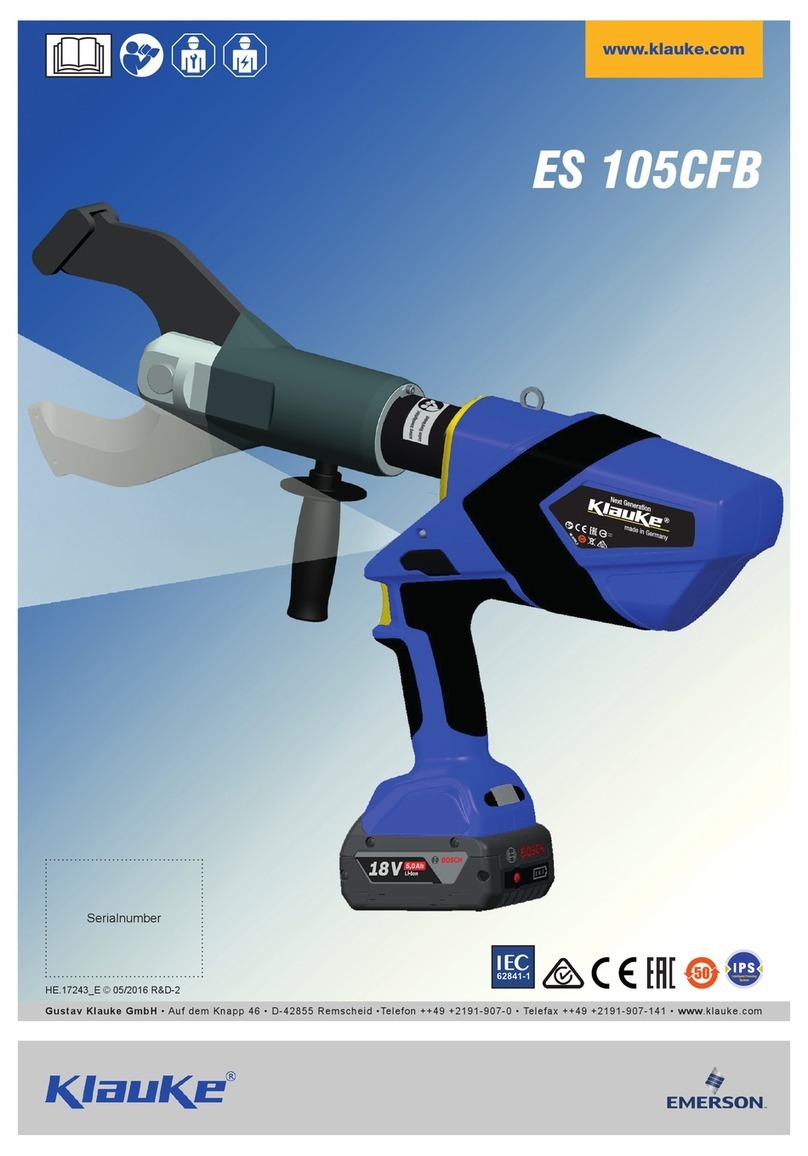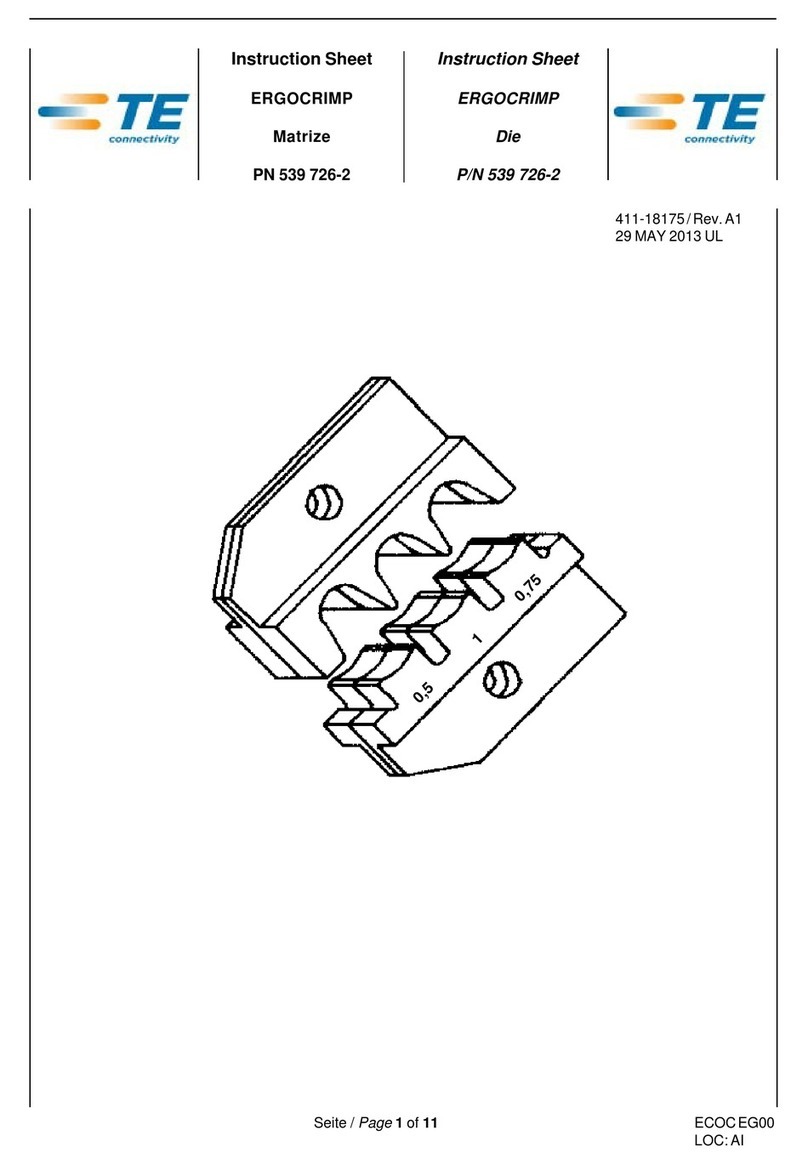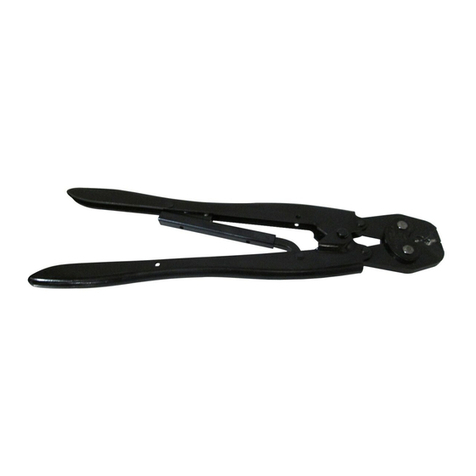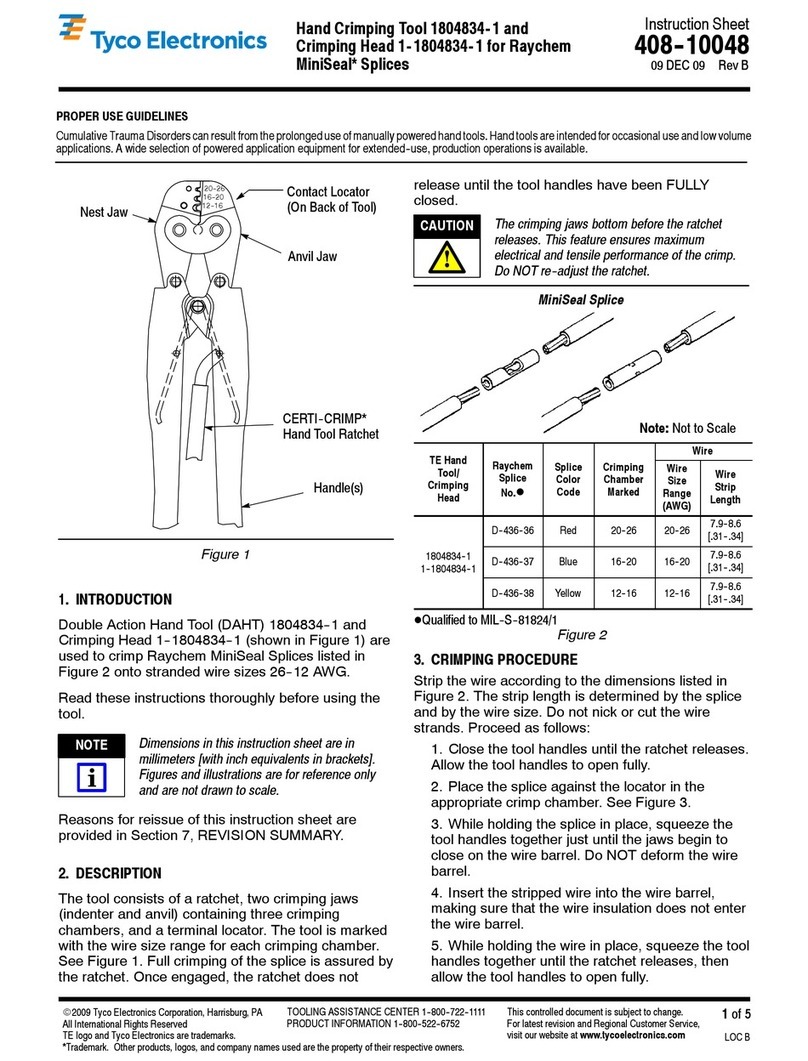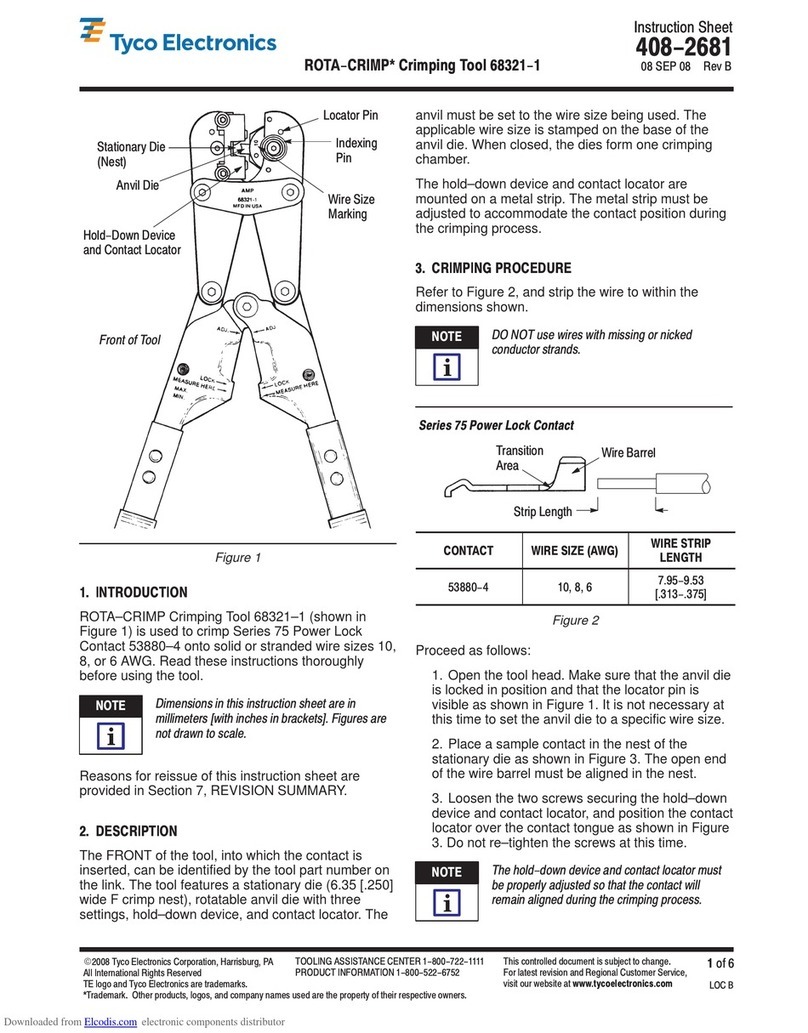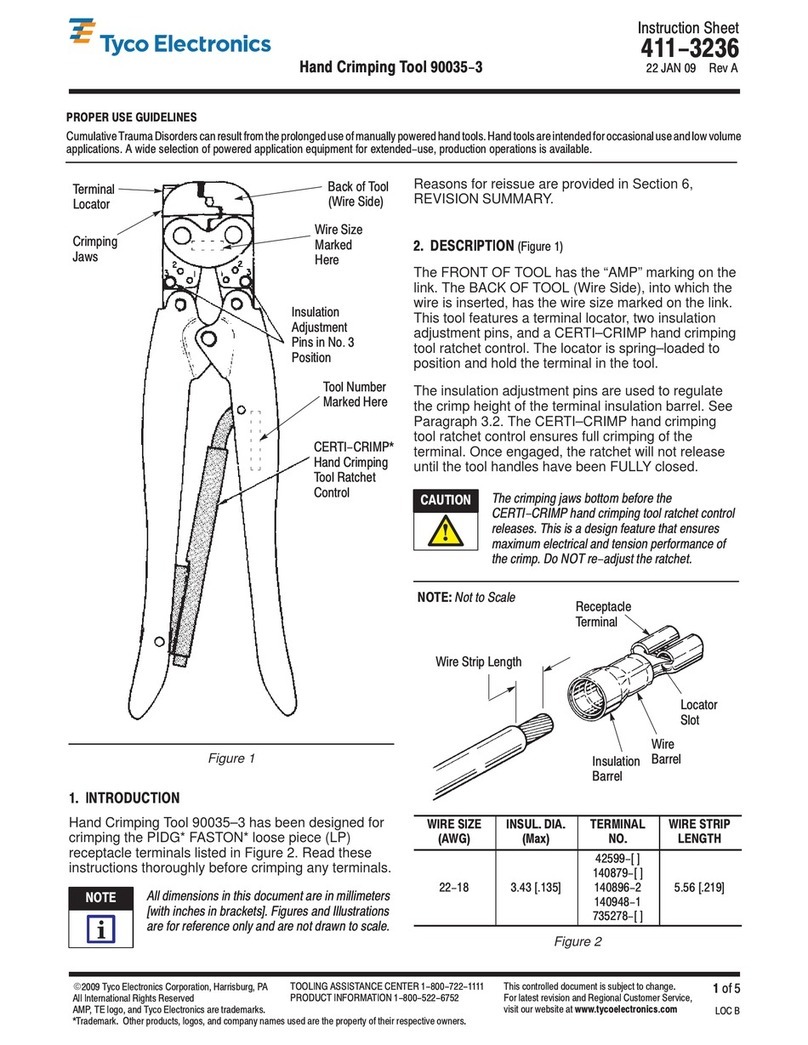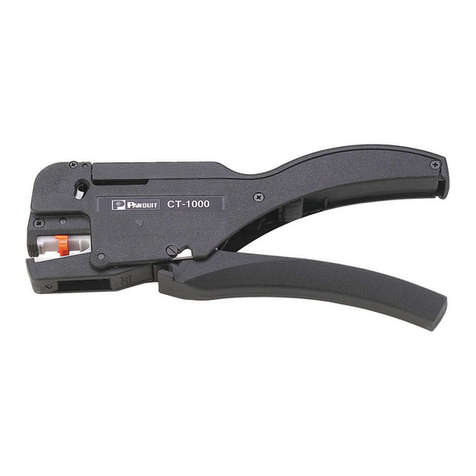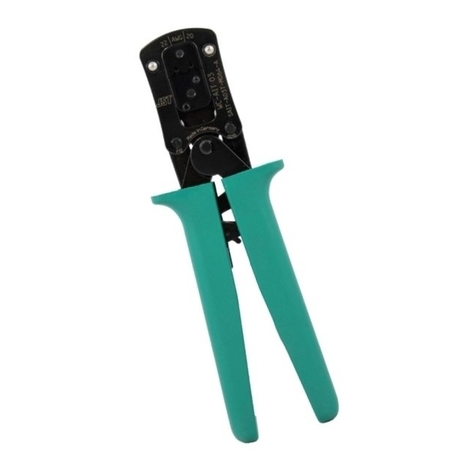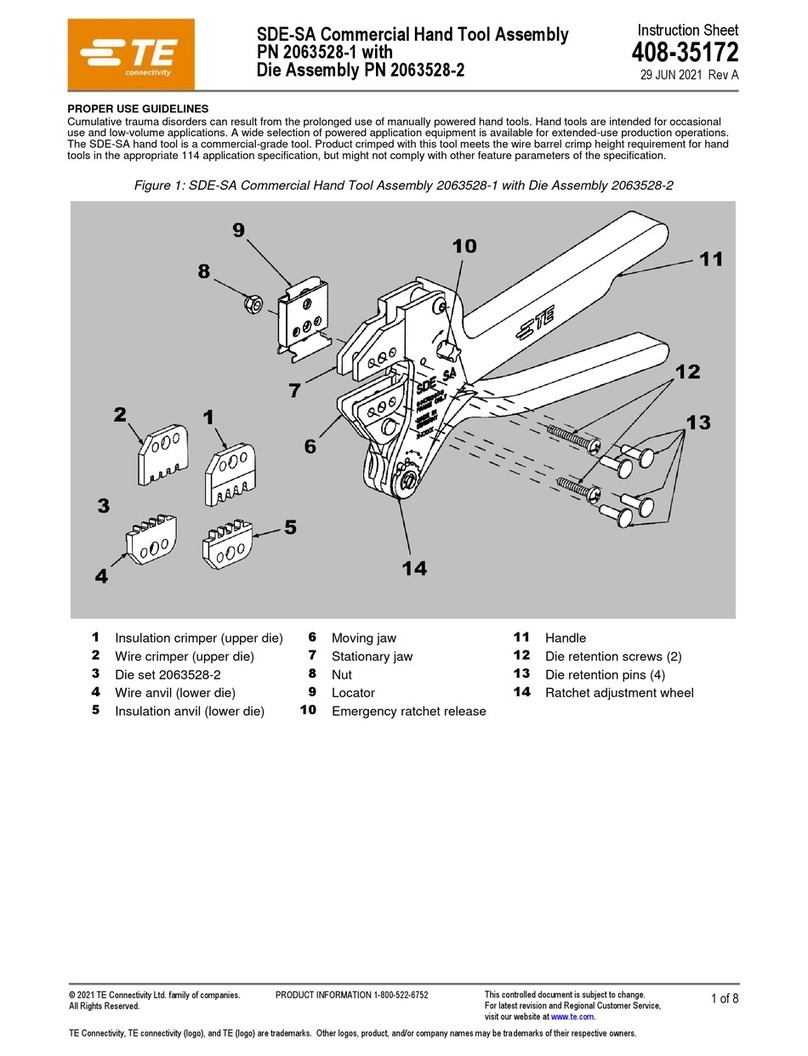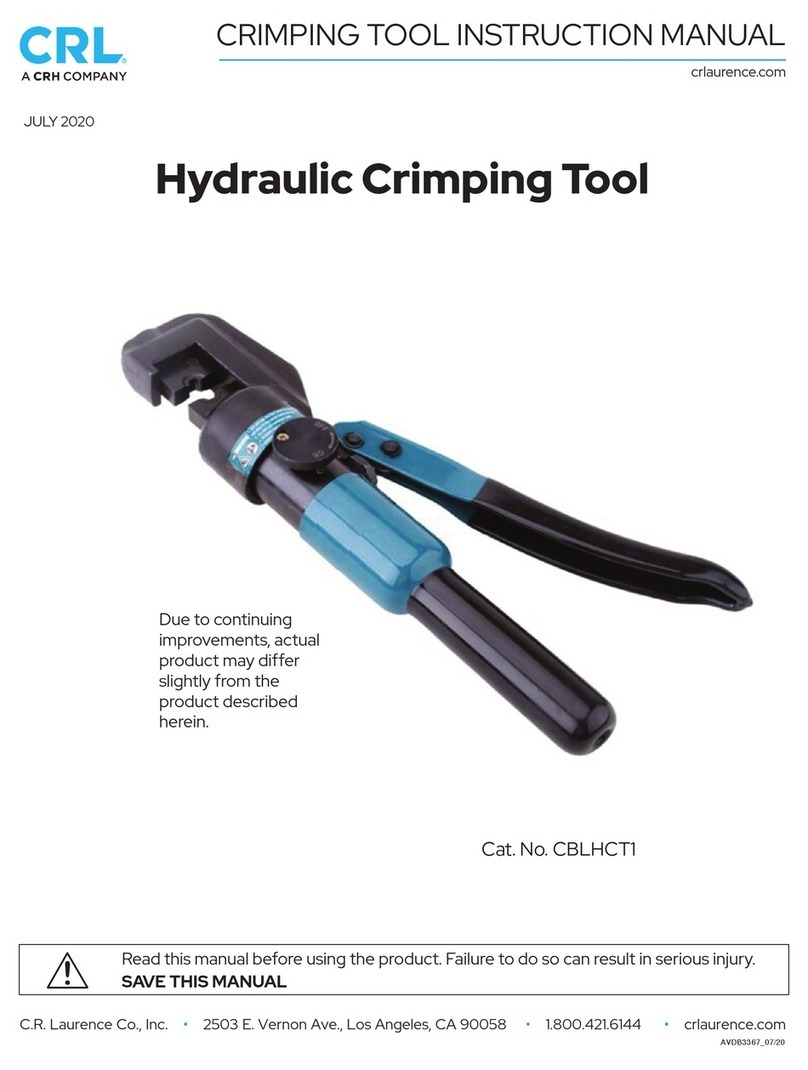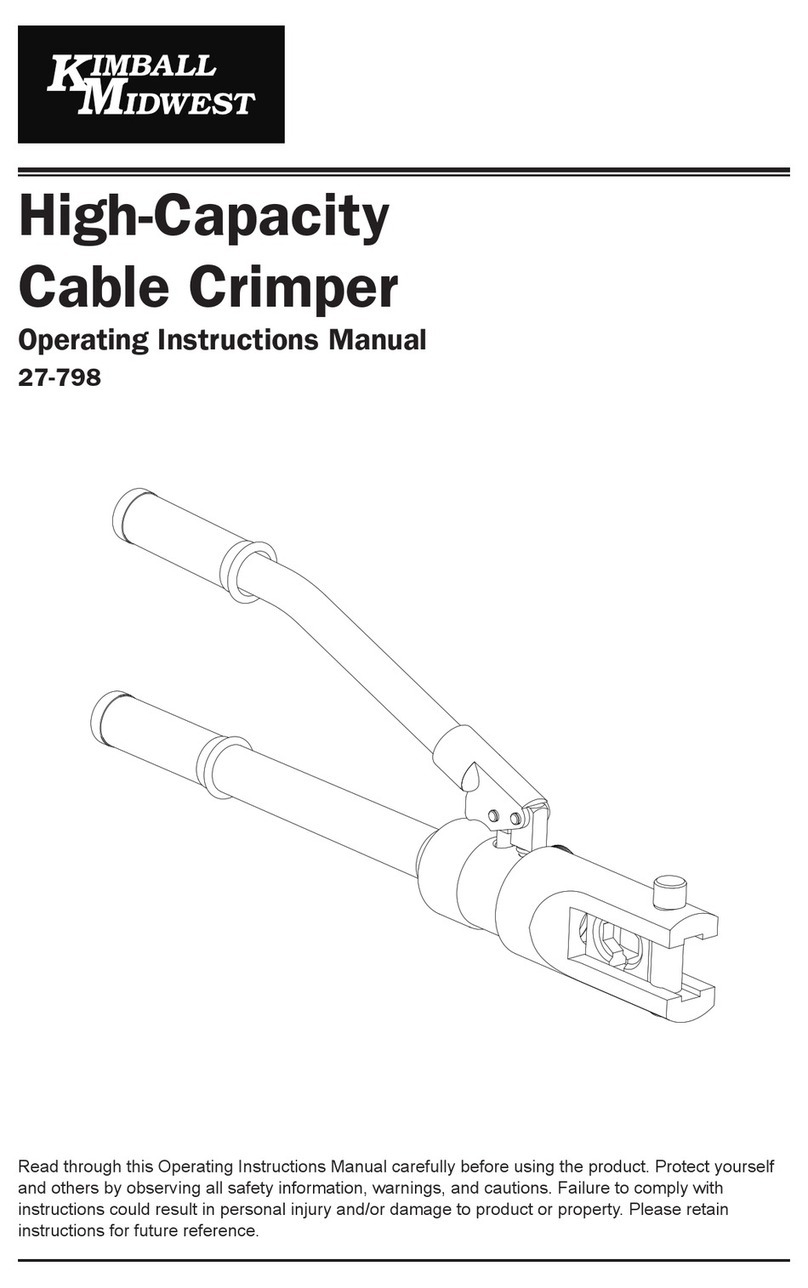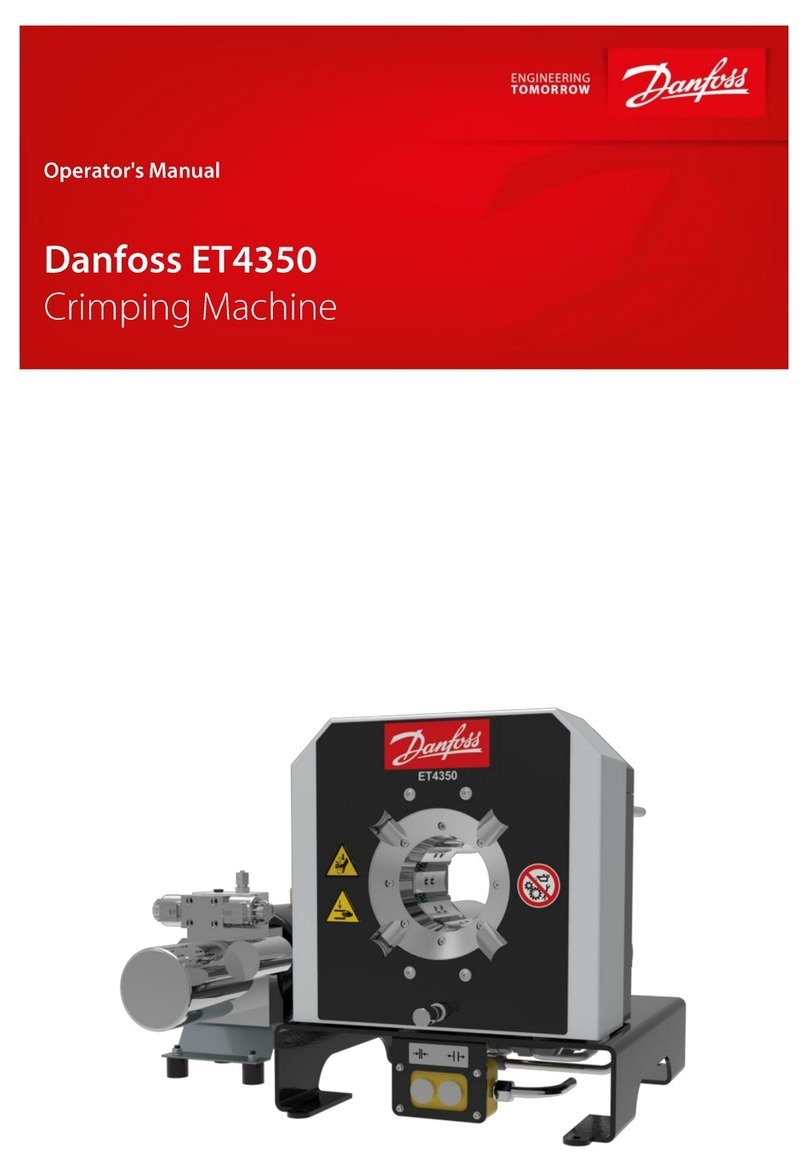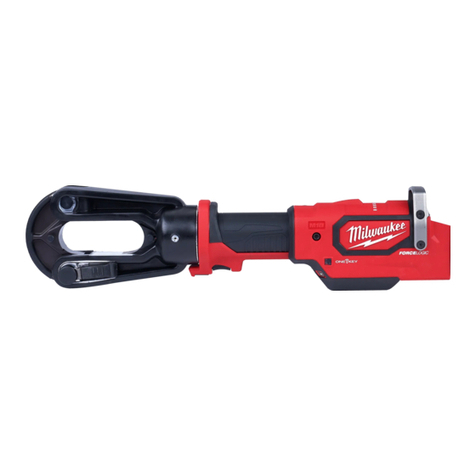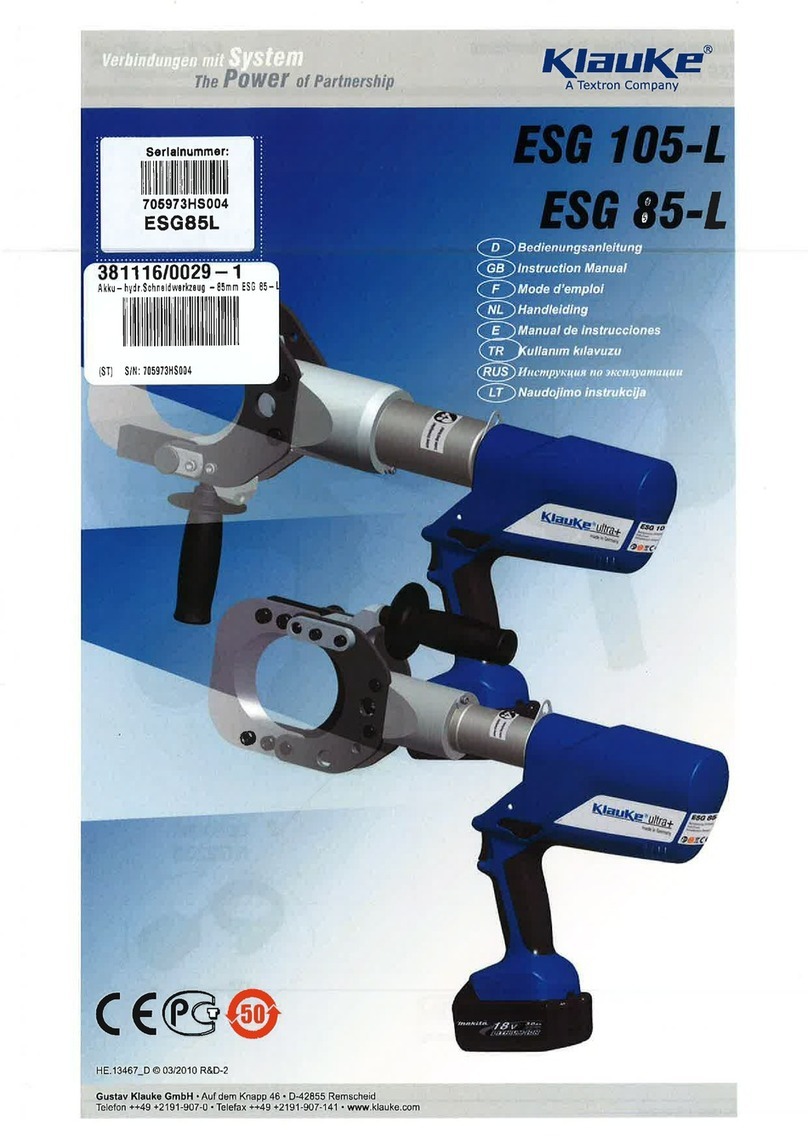
408- 1536
Hand Crimping Tools 46073 and 46074
3of 5Rev HTyco Electronics Corporation
The hand tool is inspected before being shipped from
the plant; however, it is recommended that the tool be
inspected immediately upon arrival to ensure that the
tool has not been damaged during shipment.
Wire ends should butt against wire stop; however,
application is acceptable if wire ends are flush with or
protrude beyond inside ends of wire barrels.
Observe crimped rings for splitting. split rings indicate
possible damaged dies or wire insulation diameter is too
large (refer to Figure 2). Conductor strands may fracture
if over--sized insulation diameter is used.
Figure 4
2
Reject
1
1
2
Crimping Inspection
Due to the precision design, it is important that
no parts of these tools be interchanged except
those replacement parts listed in Figure 7.
4.1. Daily Maintenance
1. Remove dust, moisture, and other contaminants
with a clean brush, or a soft, lint--free cloth. Do
NOT use objects that could damage the tool.
2. Make certain that the retaining pins are in place
and that they are secured with retaining rings.
3. All pins, pivot points, and bearing surfaces
should be protected with a thin coat of any good
SAE 20 motor oil. Do NOT oil excessively.
4. When the tool is not in use, keep handles closed
to prevent objects from becoming lodged in the
dies. Store the tool in a clean, dry area.
4.2. Lubrication
Lubricate all pins, pivot points, and bearing surfaces
with SAE 20 motor oil as follows:
Tool used in daily production—lubricate daily
Tool used daily (occasional)—lubricate weekly
Tool used weekly—lubricate monthly
Wipe excess oil from tool, particularly from crimping
area. Oil transferred from the crimping area onto
certain terminations may affect the electrical
characteristics of an application.
4.3. Periodic Inspection
1. Hand tool should be immersed (handles partially
closed) in a reliable commercial degreasing
compound to remove accumulated dirt, grease,
and foreign matter.
2. Close tool handles until ratchet releases and
then allow them to open freely. If they do not open
quickly and fully, the spring is defective and must
be replaced. See Section 5, REPLACEMENT AND
REPAIR.
3. Inspect head assembly for worn, cracked, or
broken dies. If damage is evident, see Section 5,
REPLACEMENT AND REPAIR, for information on
obtaining customer repair service.
A. Gaging the Crimping Chamber
This inspection requires the use of a plug gage
conforming to the dimensions provided in Figure 5.
Tyco Electronics does not manufacture or market
these gages. To gage the crimping chamber, proceed
as follows:
1. Remove traces of oil or dirt from the crimping
chamber and plug gage.
2. Close the tool handles until it is evident that the
dies have bottomed; then hold in this position. Do
NOT force the dies beyond initial contact.
3. Align the GO element with the wire barrel
crimping section. Push element straight into the
crimping chamber without using force. The GO
element must pass completely through the
crimping chamber. See Figure 6.
4. Align the NO--GO element and try to insert it
straight into the same crimping chamber. The
NO--GO element may start entry, but must not
pass completely through the crimping chamber.
SeeFigure6.
5. With dies bottomed, check insulation (ring)
crimping section using the appropriate plug gage in
same manner as Steps 3 and 4.
If the crimping chamber conforms to the gage
inspection, the tool is considered dimensionally
correct, and should be lubricated with a THIN coat of
any good SAE 20 motor oil. If not, refer to Section 5,
REPLACEMENT AND REPAIR, for information on
obtaining further evaluation and repair.
For additional information regarding the use of a plug
gage, refer to instruction sheet 408--7424.
NOTE
i
